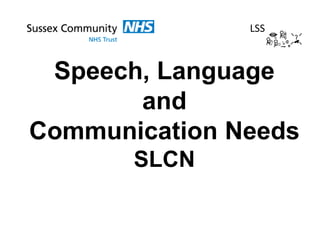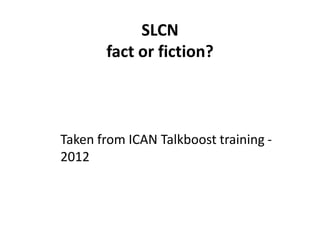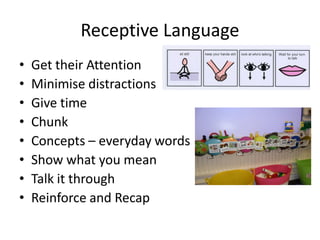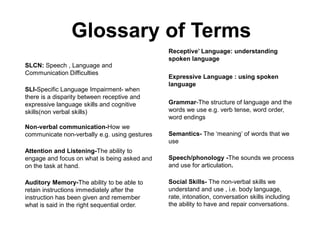This document provides information about speech, language, and communication needs (SLCN). It defines the roles of specialist speech and language therapists and teachers in supporting students with SLCN. It notes that approximately 10% of students have SLCN and 5-7% have them as a primary difficulty. The document discusses factors that can impact language development, both inside and outside of the child, and provides strategies teachers can use to support students with receptive language, expressive language, speech, and social language skills.







































